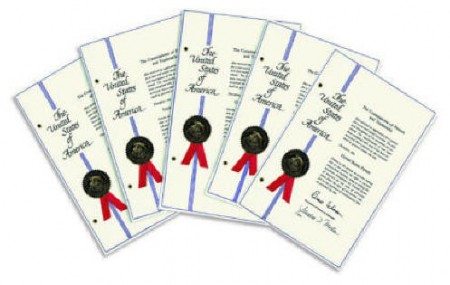Jan
20
Where Did All Those Great Ideas Go?
January 20, 2015 | Leave a Comment
Most, some 97% of patents, do not generate royalty payments to inventors. That may come as quite a surprise to the average American who may still think that an invention could be a path to wealth and prosperity. It will also serve to explain to so many readers who wonder what happened to the great ideas we’ve seen here over the past years.
Quite simply put – the U.S. Patent system is broken. Almost no patented discoveries ever get used. The evidence is piled up on this website over years. It must be a heartbreaking realization to hundreds of thousands of inventors, researchers and scholars nationwide.
Most folks in the early research and inventing business think the biggest problem is abusive litigants who extort so-called “license fees” from small businesses unable to pay the cost of standing up to them in court. Called patent trolls, they do present a real and present danger to innovation in medium and smaller business in the U.S.
But before anything even gets that far, a much more damaging situation stands in the way. The innovation market of patents is so constricted by high transaction costs and legal risks that it excludes the vast majority of small and mid-sized businesses and prevents literally 95% of all patented discoveries from ever being put to use to create new products and services, new jobs, and new economic growth.
The patent trolls are thought to extort something in the low range of tens of billions of dollars, which is plenty bad enough. Litan and Singer, with footnotes, assert that liberating patent licensing from its litigation-focused costs and risks would enable tens of thousands of currently-dormant inventions to be commercialized and conservatively add up to $200 billion a year in increased output to the U.S. economy.
The up front problem is 10 times, a full order of magnitude, worse than the trolls. It stands in the way of economic progress, job creation and wealth creation.
One remaining blessing (or curse) of the patent system is the disclosure in a patent. The U.S. patent database is the world’s largest encyclopedia of technology improvements and technology experts in the world. If you are a nation state, such a most recently China, or a huge international company, mining the patent database is a worthwhile technique to build an economy or company and develop legal strategy to minimize infringement risk.
These types of entities are known to have staff and budgets in the millions and in a few cases billions of dollars.
Without the millions of dollars small and medium sized firms are legally prudent telling employees not to read patents that might help improve their products and services.
This is the important part of a healthy system: Patents are a treasure trove of new technical knowledge in a growing multi-trillion-dollar database. Building the database is a common sense practice built over centuries. With only the hugely wealthy able to pay and play, an economy’s principle investors and employers are denied the patent system’s whole purpose of technological disclosure and commercialization.
It might even seem to be worse. The way things work now its all but impossible to commercialize any but the biggest blockbuster inventions, including the more incremental advances that are usually the most useful in solving the pressing problems of daily existence.
Dr. Litan and Dr. Singer offered a sports analogy to illustrate how such a constricted patent licensing system harms the economy:
“It is as if the economy were playing a game of baseball in which the only hits that counted were home runs by just those players on very well-financed teams,” they wrote. “In such an economy, vast numbers of other valuable or ‘run-producing’ innovations—triples, doubles, [or] singles—generated by many other firms, universities or individual inventors cannot be economically licensed given the potential risks or costs of litigation.”
The early U.S. patent system worked quite well. From a zero start the U.S. overtook the British Empire, the world’s leading economic engine of the time, by 300% in fifty years and 500% in a century.
Yet, anyone can invent and patent a new anything, with at least $20,000 for legal and other fees to start. Then what? You’ll need the multi-million-dollar resources required to launch a startup, or the contacts and legal prowess to secure a licensing deal with a big corporation and/or, if necessary, litigate to stop an infringer. You will more likely see patent database mining years later referencing your idea in a new idea or the product appear made in another country.
Your humble writer concedes the study paper is a bit, well, academic. But is a vital part of your future to understand and take some role in the politicians, courts and lawyers who have dismantled the most powerful economic engine in history and twisted it to the advantage of a few at the expense of everyone else.
The incentive to innovate is slipping away. The national entities and huge firms have without much forethought started the death spiral of the their own by co opting the system for their self interest. As the information of new patent ideas contracts from the death of the incentive, in time the pyramid of wealth will simply shrink pulling those at the top off their perch, too.
Patents need to be on many more folks watch list.


